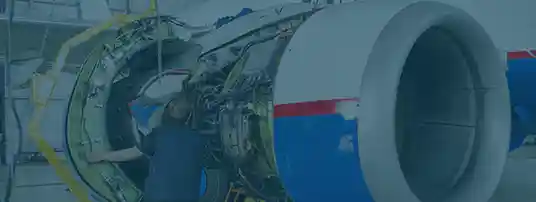Posted on May 18, 2023 linda strong aviation
Two classification systems serve as the primary methods for organizing information and guiding aviation professionals: the Illustrated Parts Catalog (IPC) and Air Transport Association (ATA) Chapters. Although they are both reference structures for aviation parts and systems, their applications, format, and scope vary significantly, so understanding these differences is essential for achieving efficient part management and regulatory compliance. In this blog, we will break down what the IPC and ATA Chapters are respectively and how each is used in practice.
An IPC is a comprehensive, aircraft-specific document published by manufacturers to help maintenance and procurement personnel identify, locate, and order replacement parts. Serving as a companion to the Aircraft Maintenance Manual (AMM), the IPC is a core aspect of an aircraft’s documentation package that generally supports an understanding of relationships between items during modifications or upgrades. The IPC does not provide procedural guidance for removing or installing parts, as that is the role of the AMM. Instead, the IPC strictly defines what the part is and where it fits.
ATA Chapters refer to a standardized classification system originally developed by the Air Transport Association of America—now known as Airlines for America to promote uniformity in how technical information is arranged. This structure employs a two-digit numerical code to categorize every major aircraft system, allowing for consistent reference across virtually all commercial aircraft regardless of manufacturer, make, or model. As such, if you know the general system a part belongs to, you can use the corresponding ATA Chapter as a starting point to narrow down the exact part you need.
| ATA Code | System |
|---|---|
| ATA 21 | Air Conditioning |
| ATA 24 | Electrical Power |
| ATA 27 | Flight Controls |
| ATA 32 | Landing Gear |
| ATA 73 | Engine Fuel & Control |
Each ATA Chapter may be further divided into sub-chapters and sections for deeper technical segmentation. For instance, within ATA 32, there may be subdivisions for nose gear, main gear, doors, and retraction systems.
| Illustrated Parts Catalog (IPC) | ATA Chapters | |
|---|---|---|
| Scope | Aircraft-specific | Universal across aircraft models |
| Content Type | Visual diagrams, part numbers, detailed listings | System-based technical data structure |
| Primary Purpose | Identifying and ordering parts | Organizing technical information |
| Issued By | Aircraft manufacturer | Airlines for America |
| Maintenance Role | Identifies components to be replaced | Classifies where the component belongs |
The key takeaway here is that while the IPC provides detailed part-level insight for an aircraft model, ATA Chapters offer a broader framework to classify systems and procedures universally across aircraft platforms. With this being said, refer to the IPC when:
Meanwhile, it is best to turn to ATA Chapters when:
Both IPCs and ATA Chapters play foundational roles in the aviation industry, so if you want to seamlessly find ready-to-purchase parts by IPC or ATA listing information, we encourage you to turn to Aviation Sourcing Solutions. Owned and operated by ASAP Semiconductor, this platform features a wide range of high-quality aircraft parts and more, all of which are presented with and organized in catalogs by common identifiers for ease of browsing.
We are committed to providing quality components with every order, our offerings coming exclusively from leading manufacturers and suppliers from around the globe. Aside from our easy to navigate website and trustworthy options, we also aim to reduce the complexity of fulfillment with a streamlined quotation process, where our experts curate solutions to meet exact needs. With all of this in mind, we invite you to explore our platform and request a quote at your convenience, knowing that we will treat you to unmatched service and products every time.

 The only independent
The only independent



“We Proudly Support Intrepid Fallen Heroes Fund that serves United States Military Personal experiencing the Invisible Wounds of War : Traumatic Brain Injury (TBI) and Post Traumatic Stress (PTS). Please visit website (www.fallenheroesfund.org) and help in their valiant effort”.
We Hope that You Will Visit Us Again the Next Time You Need Aircraft Parts and Make Us Your Strategic Purchasing Partner.
Request for Quote